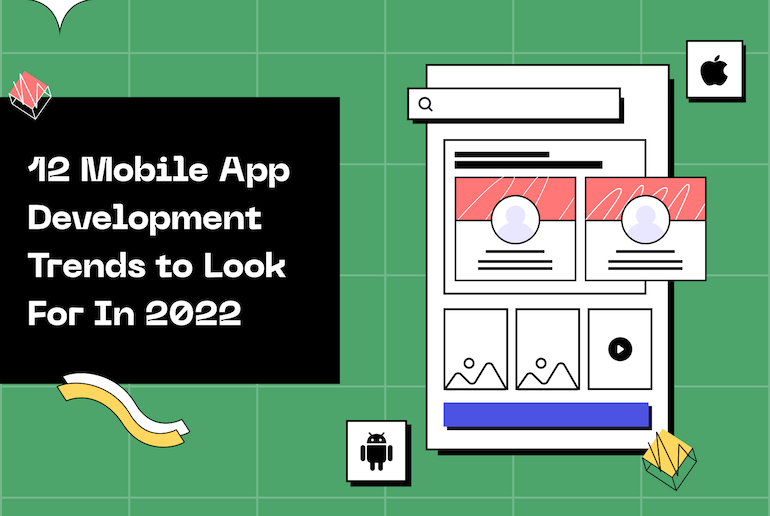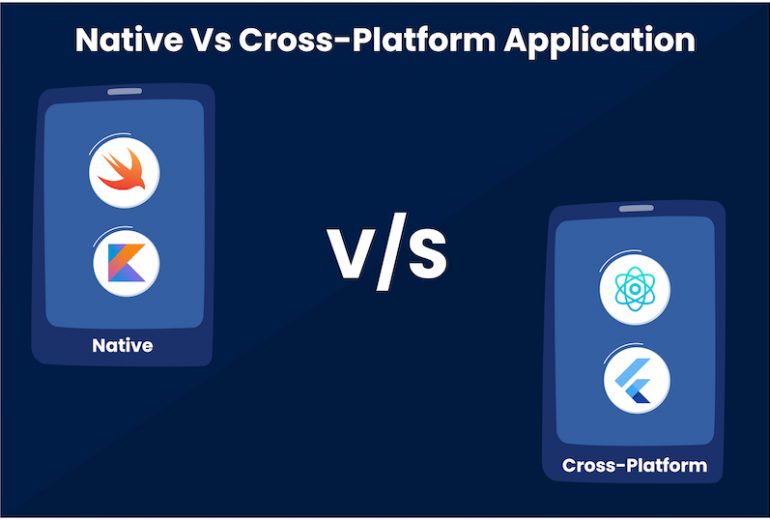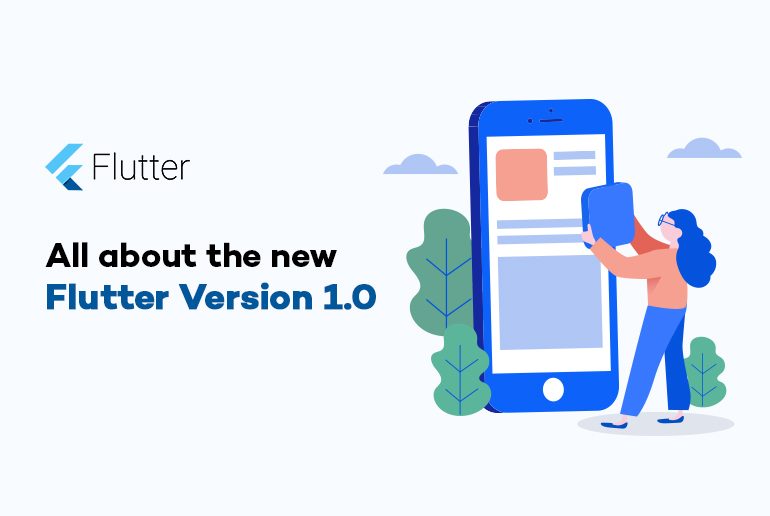The COVID-19 outbreak has fueled the world’s rising reliance on telephones, propelling the fast creation of mobile applications. According to current data, both the Google Play Store and the Apple App Store have more than 5 million applications accessible.
Following mobile app development trends provides consumers with benefits and more freedom while using the app for personal reasons. For more innovative solutions, Top Mobile App Development Trends for End-to-End Software Development are required. However, as technology and global digitalization advance, so will the need. As a result of the increasing use of mobile devices, most businesses are looking forward to selling their service or product via apps.
Mobile App Development Trends
In 2021, mobile app development was bigger and faster. This was attributed to new technologies like 5G and edge computing, as well as evolving perspectives on applications in general. Indeed, we are approaching a moment in which our society is growing more dependent on mobile devices and, as a result, mobile applications. We have compiled a list of 12 developments in the apps of smartphones that are going to be the most prevalent in 2022. The readers are advised to look out and be excited about these upcoming trends:
- 5G connectivity in Smartphones
The first and most important advancement, which is practically a requirement of the hour, is 5G network connectivity on smartphones. 5G, the fifth generation of mobile communication technologies, is almost finished. It will transform mobile applications and app development in ways we never imagined. We’ve studied the mobile app development trends and their contribution to 5G technology for a better user experience as technology evolves. As a consequence of this advancement, mobile device accuracy and efficiency will greatly increase by 2022. 5G is also expected to bring in the Fourth Industrial Revolution, but what does this imply for mobile apps?
With the IT industry on the rise, software development firms are focused on current development and offering effective applications ranging from enhancing network efficiency to raising traffic capacity with the help of 5G technology. The business can give better solutions with quicker outcomes by using 5G technology throughout app development and testing. It all comes down to the speed and interconnectedness of 5G. When compared to its predecessor, 5G has a latency of less than one millisecond.
- Augmented Reality (AR) and Virtual Reality (VR)
The popularity of Pokemon Go may have been fleeting, but it cleared the path for augmented reality in smartphone app development. It demonstrated to the world that we could employ VR to provide people with an immersive experience. Businesses concentrate on mobile app development to create augmented reality experiences that convey their services in the best manner possible. AR applications provide consumers with a three-dimensional experience, and mobile app developers will continue to build more unique features and app functionality.
Several app areas, including real estate, on-demand, retail, engineering, and others, will continue to employ augmented virtual reality with the assistance of a software development business. AR and VR will remain an emerging trend in 2022 as it moves away from being a mainstream technology.
- Foldable phones and apps for them
A decade ago, most of us recall using a flip phone. Foldable products, on the other hand, have become the new standard, with mobile phones switching from touch screens to GPS capabilities and having just one or no buttons dominating the market. Foldable devices have made a comeback in the mobile market when it comes to innovation. The concept here is that an app should be adaptive and modify its display smoothly when the screen folds or unfolds.
Although foldable devices make up a tiny fraction of the overall smartphone industry, this will change in the coming years. According to Statistics, 50 million units will be supplied in 2022. So, while you plan your mobile app development approach, keep foldable devices in mind. Make sure your apps perform effectively on foldable devices, which will be a challenging mobile app development trend in 2022.
- Mobile Connected Wearable
Wearable technology has already taken over the world. The number of linked wearable gadgets hit 453 million in 2017 and is anticipated to reach 929 million by 2022, according to Statista.
A lot of noteworthy breakthroughs in the wearable device sector occurred this year. The WatchOS 8 update has been issued by Apple. It included new features, new watch faces, greater wallet access, and a redesigned user interface for Apple Watch users. Google also unveiled a unified wearables platform that blends its wearables operating system with Samsung’s Tizen software platform, cutting app launch speeds by 30%.
It foreshadows the rise of wearable technology, which will be one of the most significant mobile app development trends in 2022. In other words, app developers and businesses should create programs that give consumers an amazing digital experience on Smartwatches and wearables to get a competitive edge over those that do not.
- Internet of Things (IoT) and mobile
The Internet of Things (IoT) is a growing network of networked devices that provide consumers automated control and convenience. Smart devices and automated home appliances, together known as Smart Homes, are ideal examples of IoT technology with mobile app development.
The Internet of Things is not a new concept, but it is fast increasing as technology progresses. The explosion in mobile penetration across a wide variety of businesses and categories has created a multitude of opportunities for IoT. Users have become used to and demand more from mobile apps, where software development companies in India deliver technology-based solutions to improve their everyday lives.
Mobile apps not only make your daily life simpler by making phone calls, organizing, meeting, and ordering meals, but they also assist you with a house need from a remote location, such as locking or unlocking a front door and connecting to home security systems.
- Beacon technology on Mobile
Beacon technology was established in 2013, but it witnessed a big increase in 2020 when 3.9 million proximity sensors that use beacons were deployed worldwide. Unfortunately, many businesses, marketers, and merchants are unaware of this amazing technology and continue to engage with their customers in traditional methods. Beacon technology is widely used in a wide range of industries, including healthcare, retail, hotels, and mobile app development. The usage of beacon technology in the mobile app sector is growing in popularity since it offers several benefits. Beacon technology allows users’ telephones to get location-specific information.
Businesses have an excellent opportunity to learn more about how their customers interact with mobile apps and physical venues. It helps businesses to collect critical consumer data, such as how often consumers visit your store. The market value of beacon technology is expected to reach $55,554 million by 2026.
- Commerce on mobile
Mobile commerce makes it very easy for businesses and consumers to sell and purchase goods using mobile devices. The e-commerce industry is quickly increasing, with a projected value of $3.56 billion by the end of 2021. To accommodate this quick purchasing trend, an increasing number of businesses are concentrating their efforts on building mobile apps.
Mobile apps that support m-commerce will become more popular in 2022, as consumers prefer to buy products on smartphones rather than desktop computers. Companies must adapt to this trend by creating an eCommerce business app. It’s the only way they’ll be able to keep up with the tough competition.
- Delivery and Demand Apps
Mobile apps like Ola and Oyo have effectively transformed the app market. In an internet-focused and digitalized world, the mobile landscape promotes businesses to reach their target audience from anywhere. On-demand service apps are popular since they simplify things for both customers and app owners.
People spend $57.6 billion every year on on-demand services to suit their demands, according to the study. As demand develops and there is a huge increase in mobile app development, the opportunities for on-demand apps seem to be endless.
The idea of on-demand app creation is gaining traction, enabling startups, entrepreneurs, and small companies to capitalize on this popular trend. Businesses that wish to expand quickly might benefit greatly from on-demand applications.
- Blockchain on mobile
We first heard about Blockchain during the Bitcoin boom. Technology, on the other hand, has improved substantially and is now important in a wide range of disciplines. It is quickly growing and is expected to earn $20 billion in revenue by 2024. Blockchain is also being used extensively in the development of mobile applications.
Blockchain is widely considered as one of the most effective ways of data security, giving organizations a good opportunity to protect critical documents and record transactions. Many businesses are using blockchain technology to improve data interchange and record-keeping. Blockchain technology is quickly gaining interest in mobile app development.
- Mobile and Artificial Intelligence
For several reasons, mobile learning is well-known. To begin with, it makes learning more accessible. Learners are empowered because they can learn from anyone and anywhere. In addition, experiences like continuous feedback and 360-degree learning have made learning more dynamic and exciting.
Artificial intelligence (AI) and machine learning have had a significant impact on the IT industry, especially in terms of raising mobile applications to new heights. Have you pondered which of the ways YouTube detects your video and displays you on your screen is the most similar to your recommendation? And how does your phone assistant get your notice right away?
This is happening as a consequence of AI and machine learning algorithms. The Siri app and features like Chatbots allow us to manage the majority of the phone’s notifications and activities. Even organizations are opting for mobile learning since it leads to higher course completion rates, faster learning, stronger engagement, and better knowledge retention.
- Cloud Apps on Mobile
Cloud-based apps are expected to dominate the app development industry by 2022. According to one study, by 2021, cloud computing would host more than 94 percent of workload and computer activity. Organizations that invest in cloud-based software solutions may achieve a high level of productivity with this product strategy. Cloud-based apps are also easily available through any internet connection and any smartphone, tablet, or laptop. Cloud-based applications, according to many developers, are easier to alter than web-based apps. As a consequence, this might be one of the developments to watch.
- Apps that Cross Platforms
Cross-platform software products are also on the rise, and developers are working hard to create mobile applications that perform well across several platforms. Businesses employ a cross-platform development strategy to increase ROI and reach a larger audience. One of the most significant benefits of cross-platform app development is the ability to target iOS and Android devices while providing an excellent user experience.
Conclusion
Mobile apps have profoundly transformed the business world, and they continue to evolve as a consequence of technology breakthroughs. Consumers use smartphone apps to simplify and save time on routine tasks. From online bill payment to banking transactions, restaurant ordering, and ticket booking, users can do it all from their mobile devices in a couple of minutes.
The mobile app industry, as well as the mobile app development industry, will continue to expand rapidly. Emerging mobile app platform development technologies, as well as growing backend platforms and microservices, will continue to dominate mobile app solutions. The only way to keep ahead of the competition is by continuous learning and awareness. The above-mentioned top 12 mobile app development trends for 2022 are here for your perusal.






